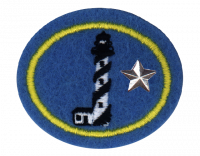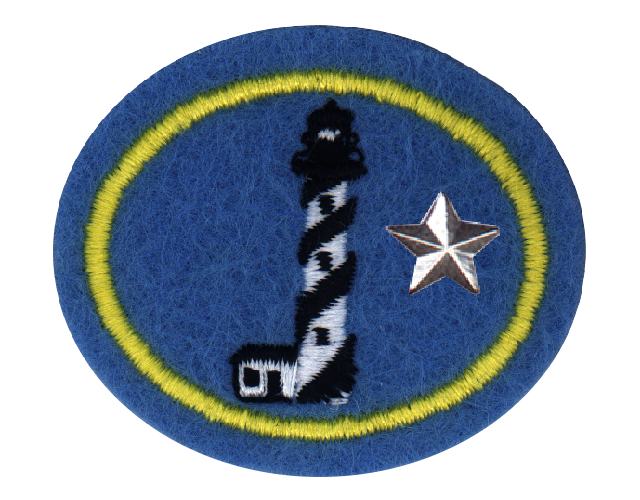Difference between revisions of "AY Honors/Lighthouses - Advanced/Answer Key/es"
From Pathfinder Wiki
< AY Honors | Lighthouses - AdvancedAY Honors/Lighthouses - Advanced/Answer Key/es
(Created page with "<noinclude>") |
(Created page with "</noinclude> <!-- 5. Hacer un gráfico que muestre cada clase de lente de Fresnel: -->") |
||
| Line 27: | Line 27: | ||
{{CloseReq}} <!-- 2 --> | {{CloseReq}} <!-- 2 --> | ||
{{ansreq|page={{#titleparts:{{PAGENAME}}|2|1}}|num=3}} | {{ansreq|page={{#titleparts:{{PAGENAME}}|2|1}}|num=3}} | ||
| − | <noinclude> | + | <noinclude></noinclude> |
| − | </noinclude> | + | <!-- 3. Hacer una lista del desarrollo de una lente de Fresnel, que incluya: --> |
| − | <!-- 3. | ||
| − | |||
| − | |||
| − | |||
{{clear}} | {{clear}} | ||
| Line 53: | Line 49: | ||
{{CloseReq}} <!-- 3 --> | {{CloseReq}} <!-- 3 --> | ||
{{ansreq|page={{#titleparts:{{PAGENAME}}|2|1}}|num=4}} | {{ansreq|page={{#titleparts:{{PAGENAME}}|2|1}}|num=4}} | ||
| − | <noinclude> | + | <noinclude></noinclude> |
| − | </noinclude> | + | <!-- 4. Dibujar un lente de Fresnel: --> |
| − | <!-- 4. | ||
| − | |||
{{clear}} | {{clear}} | ||
| − | + | {{clear}} | |
| − | |||
| − | |||
| − | |||
{{clear}} | {{clear}} | ||
| Line 72: | Line 63: | ||
{{CloseReq}} <!-- 4 --> | {{CloseReq}} <!-- 4 --> | ||
{{ansreq|page={{#titleparts:{{PAGENAME}}|2|1}}|num=5}} | {{ansreq|page={{#titleparts:{{PAGENAME}}|2|1}}|num=5}} | ||
| − | <noinclude> | + | <noinclude></noinclude> |
| − | </noinclude> | + | <!-- 5. Hacer un gráfico que muestre cada clase de lente de Fresnel: --> |
| − | <!-- 5. | ||
| − | |||
| − | |||
<noinclude></noinclude> | <noinclude></noinclude> | ||
| Line 107: | Line 95: | ||
</div> | </div> | ||
| − | + | {{clear}} | |
| − | |||
| − | |||
| − | |||
| − | + | {{clear}} | |
| − | |||
| − | |||
| − | |||
| − | |||
| − | |||
| − | |||
| − | |||
| − | |||
| − | |||
| − | |||
| − | |||
| − | + | {{clear}} | |
| − | |||
| − | |||
| − | |||
| − | |||
| − | |||
| − | |||
| − | |||
| − | |||
| − | |||
| − | + | <noinclude></noinclude> | |
| − | <noinclude | ||
| − | |||
{{CloseReq}} <!-- 7 --> | {{CloseReq}} <!-- 7 --> | ||
{{ansreq|page={{#titleparts:{{PAGENAME}}|2|1}}|num=8}} | {{ansreq|page={{#titleparts:{{PAGENAME}}|2|1}}|num=8}} | ||
| Line 147: | Line 110: | ||
</div> | </div> | ||
| − | + | {{clear}} | |
| − | |||
| − | |||
| − | + | {{clear}} | |
| − | |||
| − | |||
| − | + | {{clear}} | |
| − | |||
| − | |||
| − | |||
| − | + | {{clear}} | |
| − | |||
| − | |||
| − | + | <noinclude></noinclude> | |
| − | <noinclude | ||
| − | |||
{{CloseReq}} <!-- 8 --> | {{CloseReq}} <!-- 8 --> | ||
{{ansreq|page={{#titleparts:{{PAGENAME}}|2|1}}|num=9}} | {{ansreq|page={{#titleparts:{{PAGENAME}}|2|1}}|num=9}} | ||
| Line 174: | Line 126: | ||
</div> | </div> | ||
| − | + | {{clear}} | |
| − | |||
| − | |||
| − | + | {{clear}} | |
| − | |||
| − | |||
| − | + | <noinclude></noinclude> | |
| − | <noinclude | ||
| − | |||
{{CloseReq}} <!-- 9 --> | {{CloseReq}} <!-- 9 --> | ||
{{ansreq|page={{#titleparts:{{PAGENAME}}|2|1}}|num=10}} | {{ansreq|page={{#titleparts:{{PAGENAME}}|2|1}}|num=10}} | ||
| Line 192: | Line 138: | ||
</div> | </div> | ||
| − | + | {{clear}} | |
| − | |||
| − | |||
| − | + | {{clear}} | |
| − | |||
| − | |||
| − | + | <noinclude></noinclude> | |
| − | <noinclude | ||
| − | |||
{{CloseReq}} <!-- 10 --> | {{CloseReq}} <!-- 10 --> | ||
{{ansreq|page={{#titleparts:{{PAGENAME}}|2|1}}|num=11}} | {{ansreq|page={{#titleparts:{{PAGENAME}}|2|1}}|num=11}} | ||
| Line 212: | Line 152: | ||
</div> | </div> | ||
| − | + | <noinclude></noinclude> | |
| − | <noinclude | ||
| − | |||
{{CloseReq}} <!-- 11 --> | {{CloseReq}} <!-- 11 --> | ||
{{ansreq|page={{#titleparts:{{PAGENAME}}|2|1}}|num=12}} | {{ansreq|page={{#titleparts:{{PAGENAME}}|2|1}}|num=12}} | ||
| Line 222: | Line 160: | ||
</div> | </div> | ||
| − | + | {{clear}} | |
| − | |||
| − | |||
| − | + | <noinclude></noinclude> | |
| − | <noinclude | ||
| − | |||
{{CloseReq}} <!-- 12 --> | {{CloseReq}} <!-- 12 --> | ||
| − | <noinclude> | + | <noinclude></noinclude> |
| − | </noinclude> | + | ==Referencias== |
| − | == | + | [[Category:Adventist Youth Honors Answer Book/es]] |
| − | + | <noinclude></noinclude> | |
| − | [[Category:Adventist Youth Honors Answer Book | ||
| − | <noinclude | ||
| − | |||
{{CloseHonorPage}} | {{CloseHonorPage}} | ||
Revision as of 18:14, 29 April 2021
Faros - Avanzado
Nivel de destreza
3
Año
2007
Version
20.12.2025
Autoridad de aprobación
Asociación General
1
Tener la especialidad de Faros.
Para consejos e instrucciones, véase Faros.
2
Hacer un álbum de recortes incluyendo lo siguiente:
- a. Fotografías, tarjetas postales o dibujos de 25 faros. Las etiquetas deben incluir una breve descripción de: localización, año de construcción, estatus activo/no activo y orden del lente.
- b. Escribir una breve historia de los faros anteriores.
- c. Incluir dibujos/fotografías y respuestas de todos los requisitos para esta especialidad en su álbum de recortes.
3
Hacer una lista del desarrollo de una lente de Fresnel, que incluya:
- a. Nombre del señor que lo inventó
- b. País de donde ha venido
- c. Año desarrollado.
4
Dibujar un lente de Fresnel:
- a. Mostrar cómo los prismas se utilizan para concentrar la luz
- b. Mencionar su propósito
5
Hacer un gráfico que muestre cada clase de lente de Fresnel:
5a
Definir el orden y hacer una lista por tamaño
5b
Nombrar al menos un faro utilizando cada orden
6
Investigar y describir la historia de los mecanismos de rotación de las luces.
7
Hacer un gráfico que muestre la firma de 6 faros de noche (luz) y durante el día (marca de día).
8
¿Qué es un buque faro? ¿Por qué y dónde se necesitan los buques faros?
9
Leer sobre los mantenedores de los faros y hacer una lista de algunos de los peligros que se enfrentan al completar sus tareas.
10
Estudiar citas de Elena G. de White que mencionan a los faros y discutir el significado. Colocar una copia de las citas en su álbum de recortes.
11
Obtener un «pasaporte de faros» y tenerlo sellado de 10 diferentes lugares de faros.
12
Construir un modelo de faro de un faro verdadero utilizando un kit de faro de madera u otro medio. Conocer el nombre, la ubicación y la fecha en la que el faro real fue constituido originalmente.


